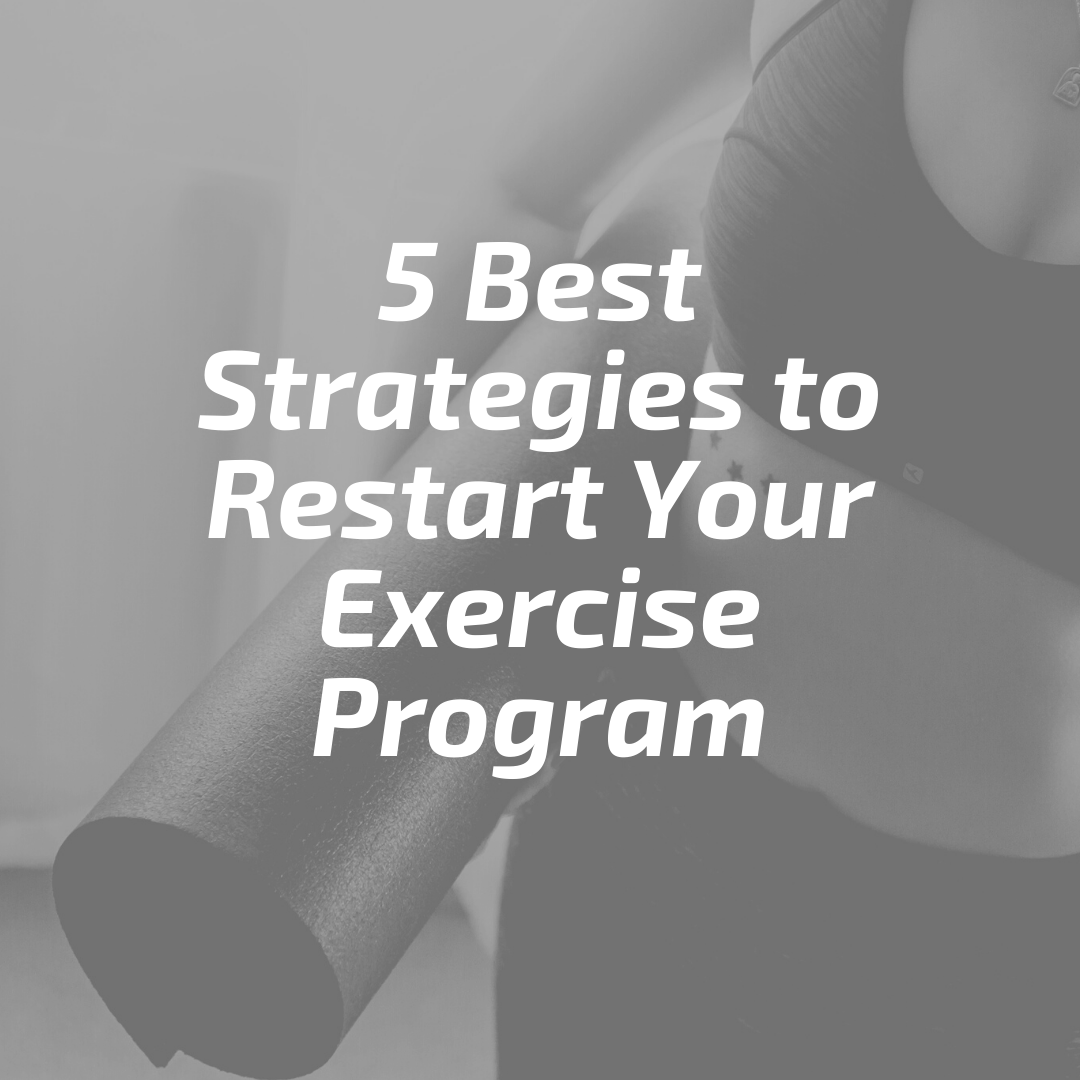
The 5 Best Strategies to Restart Your Exercise Program
It is not uncommon for patients to tell me they would like to ‘get back to the gym’ but they are not sure where to start, especially after injury or quarantine! They are confused about what exercises they should do, what exercises are safe, and sometimes discouraged because they cannot do what they used to be able to do. You are not alone! Many patients feel like this!
For most people, exercise goals are simple: Feel strong enough to accomplish any normal daily activity, play some recreational sports at a decent level and not wake up not being able to walk. Recently, I was on a run in Woodbury, and I saw a young man running with a ‘Marathon Finisher’ t-shirt. He looked to be about 65-70 years old. I was running next to him for a few minutes and asked him which race he was training for next. He answered with “Nothing special, just my 100th birthday.” I could not believe he looked so young and moving like a young and spry runner. It is amazing that anyone can do anything they enjoy if they are healthy and pain-free.
Everyone has goals when it comes to health. It is up to you to find something that you care about and go for it. This is a guide for the gym but can easily be used at home when taking the groceries out of the trunk, lifting the car seat, gardening, cleaning, etc. All of these daily activities are just THAT… activities! They require a certain level of muscular activity and if your body is not able to withstand the demands of all these activities over the course of the week, guess what? You are going to eventually hurt yourself.
EVERYONE is hyper focused on cardiovascular related exercises, like running or cycling, to try to maximize their health. As much as I love running and cardio, resistance-training, AKA weightlifting, program will benefit you more.
Although cardiovascular exercises are important, this blog is about what resistance type exercises will help you reach your goals. According to renown exercise coach Dan John, there are 5 essential movements that you need to be able to do throughout your life: Push, Pull, Squat, Hip Hinge, and Carry. If you design a resistance program around these 5 essential movements, you are off to an excellent start.
Push
Good examples of push exercises are bench press, pushups, overhead press (if your shoulders are healthy). Using your lawnmower, pushing a heavy shopping cart at Costco, and getting up from the ground requires a higher level of muscular activity. These movements are either partially essential (lawnmower) or HIGHLY essential (picking yourself up off the ground). You can see why consistently training these movements can be particularly helpful, especially as we all age.
Pull
Good pull exercises are any of the rowing variations including, bent over rows, seated rows, renegade rows etc. Pull-ups are also excellent. Bending and trying to grab the 2 milk jugs plus the other 12 bags of groceries is a perfect example of pulling weight from a lowered position. Because come on, who likes to take one bag of groceries at a time?
Squat
I can think of more squat variations than almost any of the other movement patterns. A few examples are body weight squats, rear leg elevated split squats (Bulgarian split squats), sumo squats or any of the other dozen or more variations.
Playing with your kids sometimes requires some version of a squat, lowering down to pick things off the ground (especially heavier things) and many other scenarios in which this is an essential movement in regular life. Do not think of a squat as only the traditional movement. Use the position and exercise within its parameters, I have given you a couple different options above.
Hip Hinge
This is one of the most important of the patterns especially for those with sore backs and disc issues. A good hip hinge will allow you to bend and pick stuff up safely. Ironically, I find this is often one of the hardest movements to help people get right. Some exercises that help are deadlifts, one-legged deadlifts (Romanian deadlifts), good mornings, and kettlebell swings.
The hip hinge can be challenging. Movements typically start at the hip and if you do not have the mobility or motor control around this foundational movement, lifting things can be harder than they should be. For example, a ‘bent over row’ requires you to hip hinge prior to pulling the weight. If you do not hinge, you will not be able to lift as much weight and you are putting your low back in a position that may increase the chances of injury.
Carrying
This sounds simple, but it is so very important! A good carrying exercise also trains your entire body! Common examples are suitcase carries, farmer walks, rack carries, and waiter carries.
Going back to the grocery analogy, we want to carry all 12 bags, right? How are you going to get them from your car to the fridge if you do not have the capacity for it?
Key Takeaways
It is all about building capacity! Designing a program around these 5 basic movement patterns and consistently implementing it can help ensure that you can function and move well for years to come, play with the grandkids, get up and down off the floor independently, get in and out of the tub without a pull support, go up the stairs when the elevator breaks and so on and so on.
If you are wondering how to start, pick one or two exercises from each of the above movements and get training! If you need assistance or prefer a little more one-on-one rehab. Give us a call! 651-459-3171

